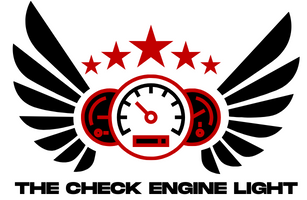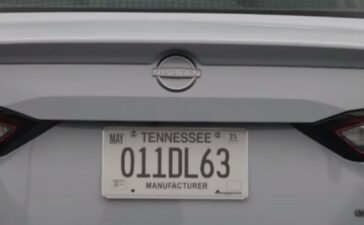During my working years in the Check Engine Light mechanic store, I’ve seen many Honda owners who were worried about their blinking engine lights on the dashboard.
We all know it’s concerning, but it’s necessary to understand the cause of that. Here are the most common causes and solutions:
You might also enjoy: Chevy 2500 Bolt Pattern: Ultimate Guide [2023]
Top 10 Common Causes for Honda Check Engine Light
-
Loose Gas Cap:
Cause: many of the drivers become worried about their engine light, without knowing that their gas cap isn’t tightened properly and triggers the engine light. This can cause fuel to escape.
Fix: always make sure to tighten the cap properly after refueling. In case the gas cap is damaged, you can easily replace it. It’s not a costly component.
-
Failing Catalytic Converter:
Cause: the catalytic converter reduces harmful emissions. If it doesn’t work adequately, harmful substances can’t be transformed into less harmful ones.
Fix: sadly, I have to say that replacing the catalytic converter tends to be costly.
But it can not be ignored, because driving with this problem will cause more complicated issues and even you may have to pay fines in areas that have strict emission standards.
-
Worn spark plugs:
Cause: spark plugs burn the mixture of air and fuel in the engine. The improper function of that leads to misfires. It’s a common problem and I’ve changed many spark plugs in my record.
Fix: frequently changing the spark plugs can prevent this issue.
This component plays a crucial role in the car and the malfunction of that can be noticed immediately.
You might also enjoy: Jeep Check Engine Light: Causes And Solutions [2023]
-
Faulty Oxygen Sensor:
Cause: the oxygen sensor is there to measure the amount of unburned oxygen in the engine. A damaged oxygen sensor can affect the car’s efficiency and the fuel mixture.
Because it sends the wrong data to the car’s computer.
Fix: it is recommended to be replaced. It’s not expensive itself, but can cause pricey issues if it’s not changed.
-
Faulty Mass Air Flow Sensor:
Cause: the function of this sensor is to measure the amount of air that enters the engine.
If it doesn’t work properly, can disturb the balance of the air-fuel mixture and compromise the efficiency.
Fix: it’s a good idea to regularly clean the sensor. But it should be changed if it’s necessary.
-
Vacuum Leak:
Cause: the vacuum controls various components in the engine. If it leaks, its job is disrupted and it’s often noticeable by a hissing sound which it makes in the engine bay.
Fix: it’s going to be complicated to find the leak. And when it’s found, the faulty hose should be replaced.
-
Weak battery:
Cause: the battery has the duty to power other components.
The battery’s malfunction can disturb the process of providing the energy for all of the car’s components. As a result of this, the check engine light will be turned on.
Fix: the battery should be frequently checked and it should be changed if it’s old or weak.
you can also check this:
-
Faulty ignition coil:
Cause: the required power for the spark plugs is provided by the ignition coil. A damaged ignition coil can cause misfires and poor performance.
Fix: the failure of one ignition coil leads to the failure of other coils. So consider replacing all of them, especially in older vehicles.
-
Malfunctioning EGR Valve:
Cause: The EGR Valve reduces nitrogen oxide emissions. Its malfunction can affect the emissions and the car’s performance.
Fix: in case cleaning the valve doesn’t work, you have to replace it.
-
Transmission Issues:
Cause: the transmission transfers the engine power to the wheels. If this conversion goes improperly, performance issues or even transmission failure can arise.
Fix: the transmission fluid should be changed regularly. If you face any difficulties in changing the direction, don’t hesitate to contact a professional.
You might also enjoy: Everything You Need to Know About Mazda Check Engine Light
7 Things To Do if Your Honda Check Engine Light Comes On
1. Stay Calm
Surely it’s not helpful to lose control. Instead, you should stay calm in this situation.
2. Check the Gas Cap
It has been seen that the lost gas cap is the reason for the triggered engine light. So make sure that it’s closed tightly.
3. Limit Your Driving
A blinking light indicates a severe issue. Stop driving and seek help ASAP.
4. Monitor your vehicle’s performance
Every change in the car’s performance should be considered, including unusual noises or reduced fuel efficiency.
5. Avoid DIY Fixes ( unless you are sure)
Avoid trying to fix your problems by yourself. Although some of them could be solved at home, it’s always a better choice to seek professional help.
6. Contact The Check Engine Light Mechanic Store
We are here to help you! You should just bring your car to our store. Our experts can diagnose your problem and fix it.
7. Stay updated
You should stick to regular maintenance in order to avoid potential issues.
5 Steps To Reset Honda Check Engine Light
A lot of people have asked me how to reset the Check Engine Light. I have provided a step-by-step guide for you here:
1. Safety First:
It’s necessary to wear safety glasses and gloves before starting.
2. Turn off the ignition:
Make sure that your vehicle is off.
3. Locate the negative terminal:
The negative terminal usually has a black cap and a negative sign. The positive one has a red cap and a positive symbol.
You might also enjoy: Why is the check engine light flashing when accelerating?
4. Disconnect the negative terminal:
Disconnect the nut on a negative terminal with a wrench. After pulling away the connector from the battery, you should wait for 30 to 60 seconds.
5. Reconnect and tighten:
Use a wrench to reconnect the negative cable and tighten it. The Check Engine Light will be restarted by this process. If you still see the engine light, your issue wasn’t a transient one and it needs professional help.
You might also enjoy: Flashing Check Engine Light Then Stops: Causes and Fixes
Conclusion
The check engine light is often a message. It indicates that the Honda requires your attention. You can make sure of your vehicle’s health and prevent major issues with regular maintenance.
FAQs
Can I continue driving with the check engine light on?
- You can keep driving with a steady check light but according to my experience, it’s not wise to continue driving with a blinking light. You should stop your car abs seek for professional help. In this way, you can prevent more complicated problems.
How long does it take for the check engine light to reset?
- It fairly depends on the car’s model. But usually the light resets after a few driving cycles. However, it’s not unusual to take longer.
Is it expensive to fix the causes of the check engine light?
- The costs depend on the issue that triggers the light. Sometimes the only thing we should do is to replace the gas cap which is not costly. But sometimes we need to do more expensive repairs.
Can a faulty fuel cap trigger the check engine light?
- Of course yes! Most of the time the gas cap loss can turn the engine light on.
How often should I replace the spark plugs?
- It’s highly dependent on the car’s model and specifications. But I’ve always recommended chasing them between 30,000 to 90,000 miles.
What is the role of the oxygen sensor in a Honda?
- I often consider the oxygen sensor as the car’s nose. It releases the amount of oxygen which is in the engine and helps the computer to make a balance of fuel mixture and provide efficiency.
Can transmission issues activate the check engine light?
- Absolutely! I’ve seen many cases in which the transmission Issues have triggered the check light. It should be diagnosed correctly.









![an pic for Code p0420 Check Engine Light Fully Explained [2024]](https://thecheckenginelight.com/wp-content/uploads/2024/02/Code-p0420-Check-Engine-Light-Fully-Explained-2024-364x225.jpg)

